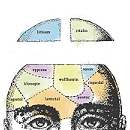A new preprint study reveals that specific childhood traits and experiences can predict the development of certain personality disorders in adolescence. The current work, led by Lars Wichstrøm of the Norwegian University of Science and Technology, links traits such as oddity, low self-esteem, and social withdrawal, as well as events such as victimization from bullying, to cluster A (schizoid, schizotypal, and paranoid) personality disorder traits in adolescence.
Notably, the current work did not find a link between developing cluster A personality disorder traits in adolescence and factors such as attachment style, autism spectrum disorder symptoms, and serious adverse life events in childhood.
The current work has not yet been through peer review. This means that experts have not thoroughly scrutinized the methods, and the results have not been adequately validated.
The authors write:
“Cluster A traits at age 16 can be predicted by a range of child-related factors already evident in preschool or 1st grade, most notably oddity, symptoms of emotional and behavioral disorders, low self-esteem, social withdrawal, and personality traits.”
The very idea of “personality disorders” is contested. Critics argue that these categories often conflate moral judgments with medical labels, pathologize responses to trauma, and carry heavy stigma, while others point to the cultural and normative assumptions built into their assessment.
Against this backdrop, the current research seeks to untangle how certain childhood traits and experiences interact with social environments: how parental and peer responses to oddity, withdrawal, or low self-esteem can reinforce or magnify those traits, and how these patterns may harden into difficulties with functioning and well-being in adolescence.
By tracing this loop of traits, environments, and responses, the authors attempt to clarify developmental pathways that may lead to what psychiatry now terms cluster A personality disorder traits.
















‘The very idea of “personality disorders” is contested.’
If by contested you mean complete bullshit…
Report comment
So kids who are judged “odd” as kids grow up to be judged as “odd” as adults. Big discovery.
Report comment
It’s classical circular reasoning. The traits of the condition correlate to the traits of the condition….at a later point in time. Okaaaay. Can you correlate it to something objective? Or interrupt the progression? Do anything actually useful??????
Report comment
Exactly. Hyperactive children are more active than non-hyperactive children, proving that they are hyperactive. Seriously? Have these people ever heard of logic?
Report comment
I remember, when dealing with my systemic child abuse covering up “mental health professionals” – since the DSM “bible” thumpers can’t even bill to help child abuse survivors, nor their legitimately concerned mothers – thinking “don’t judge a book by its cover.”
The psych industries, from my perspective, seem to be all about misjudging “a book by its cover.” Despite the reality that God is the judge of all of humanity, not the so called, “mental health professionals.”
BTW, let’s not forget that the symptoms of the “Cluster A Personality Disorders” (so called “psychotic disorders”) can be created with today’s “schizophrenia” treatments, via anticholinergic toxidrome and neuroleptic induced deficit syndrome.
Is psychiatry now changing the name of “schizophrenia,” to “Cluster A Personality Disorders?”
Tonight, I was listening to this more truthful than most psych doc’s talks, and I must say, it must have been a few hard interviews, for him to do.
https://www.youtube.com/watch?v=9EB112_cC7I
I think those on MiA may be interested in watching it.
Report comment
Given the tremendous diversity of human cultures throughout the ages, the notion that ill-defined “oddity” is a universal symptom of Cluster A disorders strikes me as highly presumptuous on the part of so-called mental health professionals. Their never-ending drive to pejoratively describe all unconventional thinking, emotion, and conduct as abnormal and pathological would be amusing were it not for the unfortunate consequences borne by people who are stigmatized or traumatized by wholly subjective diagnostic labels.
Report comment
Oh dear me, cluster A are most people I know, including me. But in a supportive community ity we flower.
Report comment
oddities unite!
Report comment